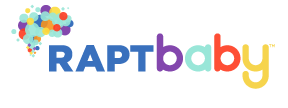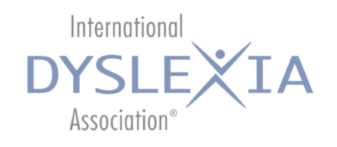
MAY 2024
Neuroscience in the Nursery
Parents often send us questions about language disorders. We welcome those because our Chief Scientist has spent more than 30 years studying their origin and potential ways to remediate or prevent them. In this newsletter, we’re taking on dyslexia – one of the most prevalent developmental language disorders (language difficulties not caused by conditions such as hearing loss or autism or by extenuating circumstances, such as lack of exposure to language).
Today’s Topic: Phonological Processing and Dyslexia – A Wonky Sounding Topic That Every Parent Should Understand
We often say that exposure to sound variation during sleep is particularly important for children at risk of language learning disorders such as dyslexia. Why? Because it supports the development of phonological processing, a generally impaired ability in dyslexic children.
Not something you think you really need to dive into? Think again. As many as 20% of children suffer from dyslexia, and many of those have no apparent family history of the disorder. So, even if you have no particular reason to worry about that for your child, it won’t hurt you to get a quick overview of dyslexia and why providing a supportive auditory environment might be the smartest thing you can do for your child – even if they don’t go on to develop dyslexia.
What is Dyslexia?
Now, that’s a tough question with many different answers – a reflection of the ongoing research into a complex neurodevelopmental disorder that we still have a long way to go in understanding. Still, most modern definitions characterize dyslexia as difficulty in reading that is reflected in poor ability to recognize words, decode or sound out words, and spell. A few other things are important to emphasize: first, as noted above, there seems to be a clear genetic basis for many cases of dyslexia, and a number of genes have already been identified as creating a predisposition for dyslexia. Also, it’s a “spectrum disorder,” meaning affected individuals experience a wide range of symptoms and severity levels.
Most importantly, contrary to scientific thinking many years ago, it is clearly recognized today that dyslexia is not a problem with either hearing acuity, perceiving images (dyslexic children can recognize and name letters; their issue is associating them with sounds), or IQ. It is one of the tragedies of dyslexia that many children suffering from it feel (or worse, are made to feel) stupid because dyslexia can cause them to acquire less vocabulary and, as a result, less information over time than they would otherwise, which often translates into low scores on academic or other developmental tests, in addition to poor reading ability. Those results have everything to do with the disorder and nothing to do with IQ (itself a controversial measure; a subject for another time), but that’s hard to explain to a dyslexic child who just feels like they’re failing.
Central to the many issues associated with dyslexia is a problem with recognizing speech sounds – that’s the “phonological processing” from our headline. As we’ve written about in other newsletters and blog posts, reading requires mapping letters (graphemes) to the sounds (phonemes) they represent. To do that mapping, a child needs to be able to auditorily recognize phonemes (the smallest units of speech in any given language] – that is, be able to distinguish a pa sound from a ba sound and, only then can they match that sound onto the appropriate grapheme or letter.
Of course, once a child recognizes which sounds go with which letters, they can begin to “decode” or sound out words, a process that allows them to translate print into sounds that make up words. As children get more proficient, this decoding (painfully sounding out a word) becomes automatic – they stop reading with their lips moving or even realizing they are connecting the letters to sounds – but for dyslexic children, decoding can present a very tough challenge.
Neuroscientists are still working out why this is, but they have shown that dyslexic children display significant differences in brain connectivity (including less well-connected regions that are critical parts of the reading network, differences in which brain hemisphere is doing the majority of work, and less precise connections in the brain networks that process phonemes) and often slower auditory processing speed than typically developing children, affecting their ability to do the phonological processing required for learning to read.
Notably, it only takes slight differences in either of these areas to cause a problem because auditory information – the difference between one phoneme and another, for instance – occurs in the tens of milliseconds, a blisteringly fast pace. Processing a tiny bit more slowly or having a slightly fuzzy acoustic map can cause a child to miss or misinterpret the auditory information they need to identify a sound, creating a big problem when it comes time to learn to read. In fact, research from our Chief Scientist, Dr. April Benasich, has shown that non-linguistic rapid auditory processing skills in the first year of life (i.e., enduring differences in the speed and accuracy of perceiving tiny variations in sounds) serve as a robust behavioral marker of later language and pre-reading difficulties (see Choudhury & Benasich, 2011 as well as Benasich & Tallal, 1996, 2002).
When Does Dyslexia Appear?
Often, it’s only when children are in school and are identified as having a reading problem – they’re slow readers, make frequent mistakes in decoding words into the sounds that make them up or blending sounds into words – that the issue of dyslexia is raised. These children may also have difficulty understanding and remembering what was read, and poor spelling and writing skills, and poor handwriting and letter formation can be part of the picture as well.
But because dyslexia is a neurological condition, meaning you have to actually change the brain to address it, the later it’s diagnosed, the harder it is to remediate since the brain’s plasticity (its ability to reshape itself in response to the external stimuli that remediation provides) diminishes over time. This also means that you can’t just practice your child out of dyslexia; no amount of wordplay or interactive conversation or flashcard-ing is going to help, although they may be fine practices with children in general and may even help surface a dyslexia issue. Instead, dyslexics need specialized, intensive interventions that can rewire the brain to mitigate the impacts of dyslexia.
Not surprisingly, our most important advice to parents, particularly those who are dyslexic themselves (a child with a dyslexic parent has a 30% to 50% chance of inheriting it), is to be alert to early indicators of potential dyslexia so that the immense plasticity of the young brain can be used to address some of the neurodevelopmental issues that are responsible for dyslexia.
Many of the early signs of dyslexia relate to phonological processing, and we note those here. Also, be aware that the issues we are highlighting may arise from other causes as well (including hearing impairment), so, as per our usual advice, reach out to your pediatrician if something on this list causes you concern because if there is a problem, your child will benefit enormously from early intervention.
- Language-Related Developmental Milestones: Missing developmental milestones for things such as cooing or babbling, imitating sounds, saying words, or developing vocabulary may reflect auditory processing issues that could signal dyslexia or other language development issues – same for a child who is not progressing in their ability to understand simple instructions or gestures or has difficulty in following simple commands appropriate for their age.
- Print Awareness/Motivation: Well before children enter school, they should understand that the print on the page means something and, as they progress through toddlerhood, should demonstrate that they know how to handle a book properly (e.g., holding a book right-side up). Conversely, if they show no interest in books or learning or pretending to read, that could be a sign of a brewing issue.
- Phonological or Phonemic Awareness: A toddler should be able to hear and play with the sounds of language, but if they have difficulty processing auditory information, they may have trouble making rhymes or identifying syllables and initial or ending sounds in words (i.e., if you ask them to take off the c in cat and put another sound first to make a word, like sat or fat, can they do that?). This kind of phonological awareness is a fundamental skill for learning to read.
- Letter Recognition: Knowing the names and shapes of letters, both uppercase and lowercase, including being able to identify letters in various fonts and contexts, should be age-appropriate.
- Letter-Sound Correspondence: Not grasping that letters represent sounds or being unable to associate specific sounds with their corresponding letters or letter combinations is a pretty specific sign that dyslexia may be at play.
- Comprehension Skills: If a child struggles with understanding and retelling simple stories or information could be suffering from dyslexia or another disorder that affects working memory or the ability to make connections between what they read or hear and their own experiences.
The Parenting Takeaway
We are generally not fans of alarmist parenting – and think there’s a lot of hovering and interceding in modern parenting that’s not helpful to healthy development. But when it comes to dyslexia and language disorders in general, we are strong advocates for reaching out at the earliest possible moment to a professional such as a pediatrician or speech-language pathologist if you have any concerns. Similarly, in the do-no-harm school of parenting, lean into those practices that encourage and support language development – serve-and-return communication, reading (with print books!), etc.
And ending where we started, this is one of the reasons we created and recommend Smarter Sleep. It gives the brain the acoustic cue support it needs during sleep to develop the maps that support phoneme recognition and the language networks that come after. For a child who is at risk of dyslexia and the phonological processing deficit that seems to underpin it, that kind of environment can only help. Finally, while science hasn’t yet produced a cure for dyslexia, interventions as well as compensatory strategies that dyslexics develop to cope with and avoid areas of weakness – including gravitating to careers that emphasize computation or artistic strengths like IT, engineering, architecture, and media, can be very effective in meeting the challenges associated with the disorder.
A Source for More: #1

Milestones: We are not fans of the CDC’s milestones for language development, which we believe are overly generous (CDC’s suggestion that a child needs only 50 words at 30 months to be on track is setting a very low bar indeed). A more conservative (but intimidatingly long) milestone list comes from LinguiSystems. Their 2012 guide doesn’t appear to be available from the current owners of the company, but that version is still used by many SLPs (and a hat-tip from us to speech-language pathologist and TikTok educator extraordinaire @_missmichael for the reference).
To get your own copy, Google “LinguiSystems Guide to Communication Milestones,” and you’ll find links to PDFs from several sources.
A Source for More: #2
If you want to learn more about Developmental Dyslexia, there are a number of good resources for parents, two of them are here:
RAPTbaby Recommendation: Tips for Raising Readers
Whether you are a parent or a teacher, whether the child you love loves reading – or struggles with it, ReadingRockets.org has a ton of resources to help you make reading a lifelong habit (a worthy goal for all of us).



